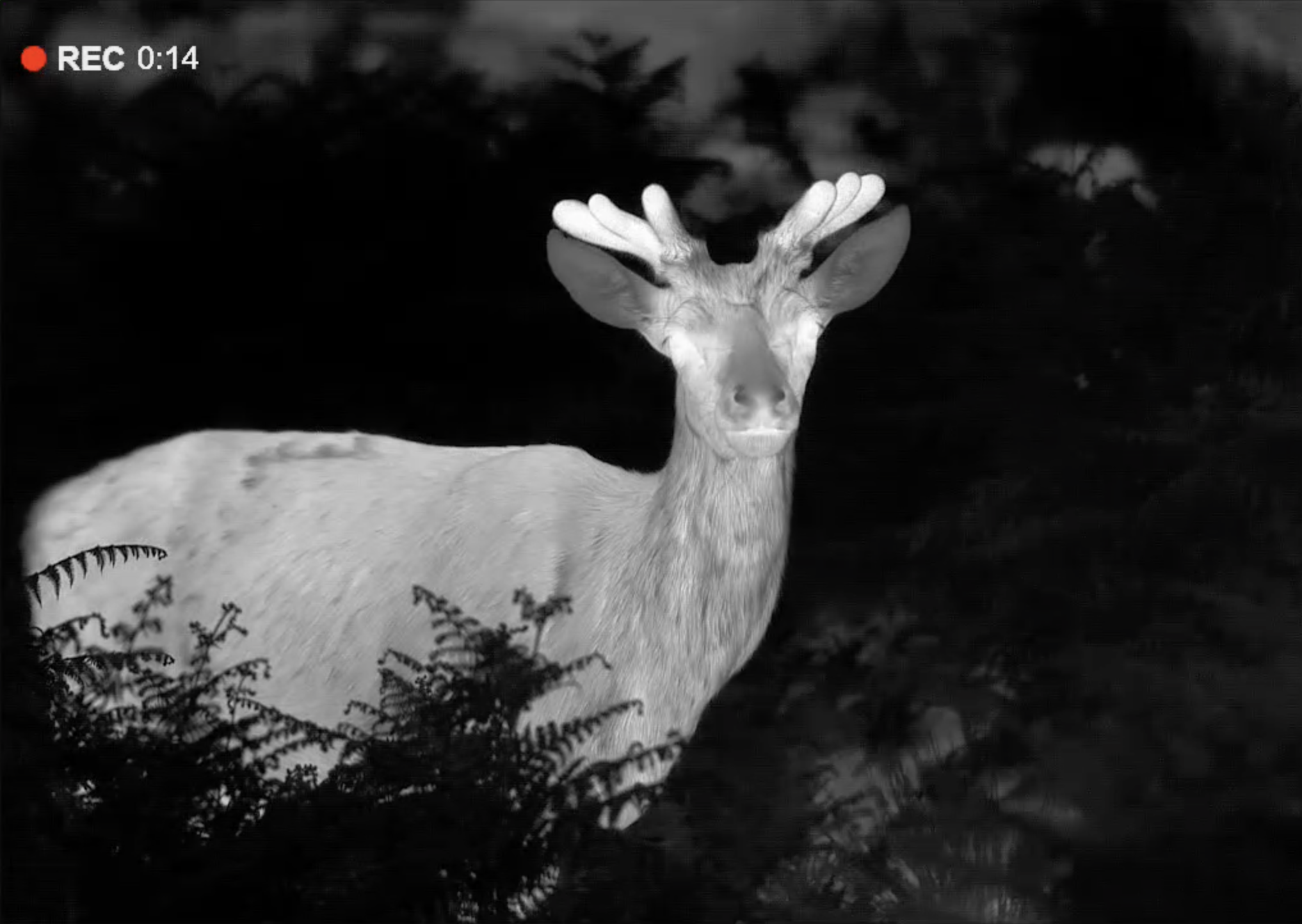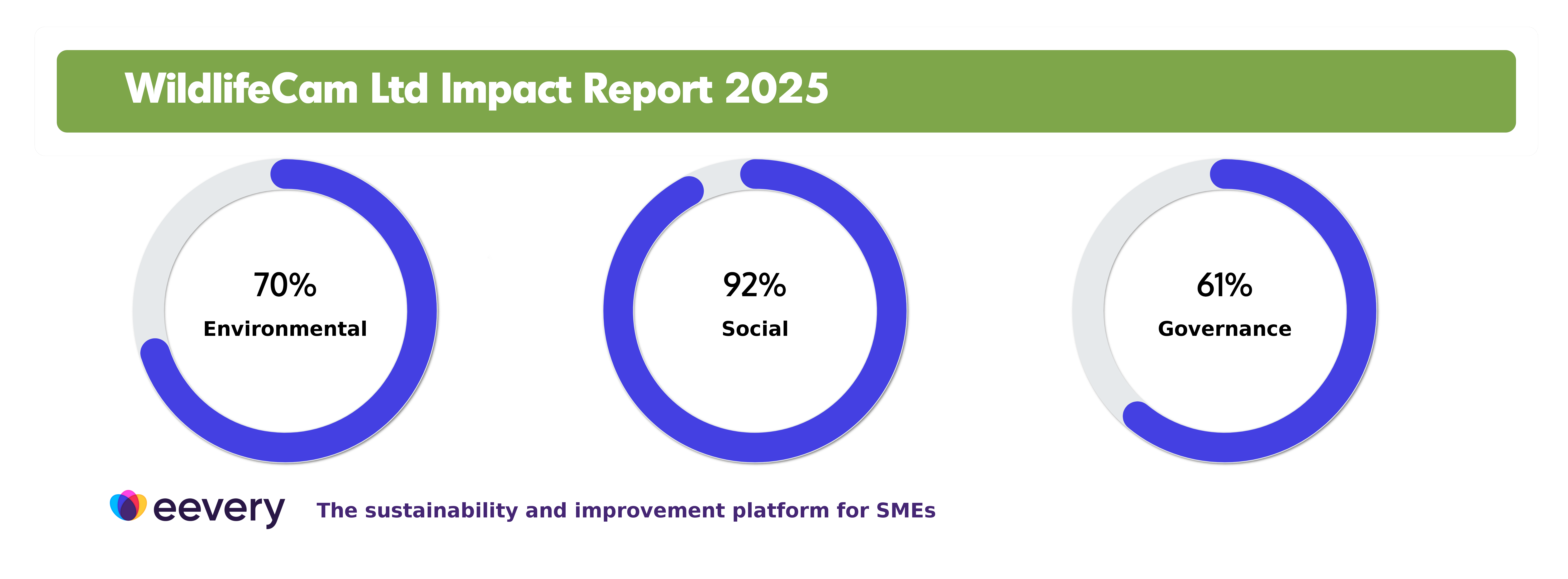For wildlife enthusiasts and researchers, thermal imagers can be a serious boost to observations. View creatures in full thermal spectrum at night and in poor visibility. Beat camouflage to get a truer picture of what is in your ecosystem, without disturbing or intruding on your non-human neighbours.
Thermal imagers use heat detection to create an image that shows the size, shape and location of warm-blooded animals and people, as well as other heat sources. In 2024, hand-held thermal imagers are so precise and sensitive that you can spot and identify creatures up to 1km away. The increased sensitivity also allows imagers to show incredible detail and clarity.
This thermal imager guide will help you decode some of the language around thermal vision, so you can weigh up the options and buy the best thermal imager for your needs.

The specifications of handheld thermal imagers can be complex and detailed, making purchasing choices hard. While not every specification lists all of these details, they are available from the manufacturer and can make a huge difference in the experience of using your thermal imager.
The thermal imagers we supply have two main styles: monocular and binocular. This means “one-eye” and “two-eye” viewing. A pair of binoculars is easily recognised, using two sets of lenses to mimic the dual vision of our own eyes. A Thermal Monocular is used with just one eye and is also called a thermal spotter or spotting scope.
Thermal binoculars have two thermal sensors, creating slightly different images on two internal screens. When viewed through the eyepiece, the brain interprets these images just as it understands the two images from our natural eyes, merging them to create a complete picture of the area.
How far away do you want to see?
DRI stands for Detection, Recognition and Identification, which are three different ranges measured on a thermal imager. These ranges describe how a ‘man-sized object’ appears at each distance in ideal conditions.
The maximum distance at which the imager detects heat. An object at this distance can be shown in two or more pixels of a thermal imaging sensor. The object is visible but without information about its characteristics.
The maximum distance at which you can recognise the object as animal, human, vehicle or something else. This is considered to fill 6 or more pixels of the sensor array.
The maximum range at which you can identify characteristics such as length, height, and species. ID range is the distance at which a man-sized object will fill 12 or more pixels on the sensor array.
These factors are also influenced by weather and device specifications. A colder night will often mean better identification ranges than on a warm summer evening, due to the contrast between object and background. The movement of animals also affects the ease of identification.
The temperature range or spectral range is the range of wavelengths the sensor can detect. Some thermal imagers are created for observing industrial applications at extremely high temperatures, while others are designed for measuring heat ingress in refrigeration.
For wildlife spotting, the temperature of a live mammal is usually around 37oC (98.6oF), so the temperature range of all the imagers we supply is usually between -40oC and 330oC (-40oF-626oF).
The image quality is determined by the screen resolution, that is the number of pixels per image. More pixels usually mean more detail and clarity.
A high display resolution for a thermal imager is considered anything over 600x500.
Thermal sensor or thermal core resolution shows the number of pixels on the sensor array. The higher the resolution, the more data it collects and the better the quality of the image.
An entry-level thermal imager, such as the HikMicro Lynx LC06, has a sensor resolution of 160x120 pixels (19,200p). Compare that to the Pulsar Merger LRF XP50, which has a sensor resolution of 640x480p (307,200p), providing a much clearer image.
High display resolution is great unless the sensor resolution is low. The final image is often achieved with interpolation, an algorithmic technique that fills the gaps with a calculated value.
For example, if the sensor resolution is 382x288 and the display is 1024x768, only ⅓ of the final image is directly from sensor data. The rest is filled in using averages of the data from surrounding pixels.
Interpolation algorithms are advanced, so the results are usually reliable. Watch out for extreme differences between sensor and display resolution.
The other way to determine the strength of a thermal core is with pixel pitch: the distance between pixels on the sensor. This is measured in microns, which are 1/1000 mm. The closer together the sensor pixels, the clearer your image will be.
How sensitive should the thermal sensor be to differences in heat?
NETD stands for Noise-Equivalent Temperature Difference, and this value shows how much visual ‘noise’ is created by differences in temperature.
Higher numbers, such as "40mK NETD" indicate that the imager is less sensitive, creating more noise.
Lower numbers, such as "sub-25mK NETD" mean the thermal camera is more sensitive, offering a clearer image.
An imager with a higher NETD value shows less noticeable temperature differences. When observing wildlife in rain, fog, mist and so on, devices with a higher NETD value are less effective as the weather may be cold enough to mask the heat source.
The lower the NETD value of the sensor, the less "noise" in the image and the more able the camera is to deliver a clear image of the target, even with lots of adverse weather conditions.
The unit ‘mK’ is a measure of thermal sensitivity: milliKelvin. In NETD, the number refers to the minute variation in heat picked up by the thermal sensor.
For example: An NETD rating of less than 25 milliKelvin (Sub-25mK) means that the sensor can show temperature differences of just 0.25oC. This gives you great clarity, so you can see background detail, individual hairs on an animal, or precise points that emit more heat than others such as bone joints.
The field of view is the angle your camera lens covers on a horizontal plane. A wide-angle lens offers a field of view greater than 100°, showing clear visuals to either side. An example of a narrow field of view would be 35°.
The field of view (FOV) depends on the lens size, with a smaller lens providing a wider field of view due to distortion. For example:
When zooming or magnifying, the FOV gets narrower to focus on a point further ahead.
It’s worth checking the battery life of a thermal imager before you buy, to ensure it can keep up on your all-night wildlife-watching sprees. Check for:
Thermal imagers can come with a wide range of extra capabilities.
Rangefinder: often up to 1000m so you can measure the distance accurately
Video and Image Recording: keep a record of your observations. Check the memory storage size of the monocular as well.
Live Streaming, so you can share your observations live from the imager itself
Colour Spectra Choices, sometimes allowing black and white, thermal colour or other spectra.
Thermal imagers are extremely useful technology, particularly in changeable weather as in the UK. While Night Vision cameras can enhance the available light, thermal imagers rely on heat to provide an image.
Thermal imaging can detect animals and humans through fog, rain, or even foliage, as long as part of your subject is visible.
Thermal imagers have been used as a non-intrusive observation tool for:
As thermal imagers can detect any heat source, they can also highlight the presence of running or recently run engines or heat loss from buildings. Thermal imagers have also been used for security purposes.
The price of a thermal imager depends greatly on the type you are looking to buy.
For a high-quality thermal imaging monocular, you could spend £440 for a simple, compact model, such as the HikMicro Lynx LC06. The top end of the range extends to more than £3,000, which gets you excellent zoom and detection ranges, multiple observation modes and advanced detection.
Thermal binoculars are a little more expensive, as they use two imagers together. The benefit of binoculars is that they usually offer greater detection ranges, and place much less strain on the eyes when viewing for long periods.
At the top end of the scale is the Pulsar Merger LRF XL50, which can detect heat sources up to 2300m away, with 20x magnification.
Thermal imagers are an excellent tool for wildlife observation with particularly strong use for research and observing nocturnal creatures or those which tend to hide or camouflage.
Hopefully, this guide to thermal imagers has explained the details you’ll find in our specifications. You can refer back to this guide to help weigh up the options when choosing a thermal imager for wildlife spotting.
For any further questions about our products or deliveries, Contact Wildlife Cam or Search our FAQs for more support.


WildlifeCam Ltd is a credit broker, not a lender, and is authorised and regulated by the Financial Conduct Authority No 997540
We do not charge for credit broking services, we introduce you exclusively to Klarna
Shop and pay the Klarna way - join 150 million customers and choose flexible payments, lightning-fast checkout and secure shopping at WildlifeCam Ltd.
For more information please click here.